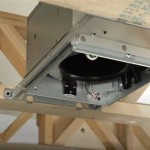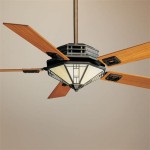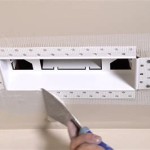What Paint to Use on Acoustic Ceiling Tiles
Acoustic ceiling tiles, also known as suspended ceiling tiles or drop ceiling tiles, are commonly used in commercial and residential spaces to improve sound absorption and reduce noise levels. These tiles are typically made from mineral fiber, fiberglass, or other porous materials designed to trap and dissipate sound waves. While functional, acoustic ceiling tiles can become stained, discolored, or simply outdated over time. Painting them may seem like a straightforward solution to refresh their appearance, but selecting the appropriate paint and application technique is crucial to avoid compromising their acoustic properties.
Understanding the nature of acoustic ceiling tiles is the first step in determining the right paint. Their porous surface allows them to absorb sound, and clogging these pores with the wrong type of paint can significantly reduce their effectiveness. Therefore, the primary consideration when choosing a paint is its ability to provide adequate coverage while maintaining the tile's porosity. Thick, heavy paints can fill the pores, rendering the tiles aesthetically pleasing but functionally useless. Conversely, paints that are too thin might not provide sufficient coverage, requiring multiple coats and potentially leading to the same pore-clogging issue.
Selecting the Right Type of Paint
The optimal paint for acoustic ceiling tiles is a specifically formulated acoustic ceiling tile paint. These paints are designed with a lightweight, low-solids formula that provides adequate coverage without significantly impacting the tile's acoustic performance. However, if acoustic ceiling tile paint isn't readily available, some other types of paint can be used with caution and proper preparation.
Water-based latex paint: This is a common and generally acceptable option, especially for interior projects. Latex paint is known for its ease of application, low odor, and relatively quick drying time. However, it's essential to choose a matte or flat finish. Glossy or semi-gloss finishes create a hard, reflective surface that will deflect sound waves rather than absorb them, negating the purpose of the acoustic tiles. Furthermore, it's crucial to thin the latex paint with water according to the manufacturer's instructions, and possibly even a bit more, to reduce its viscosity and prevent it from clogging the pores. Applying thin, even coats is key.
Acrylic paint: Similar to latex paint, acrylic paint is water-based and provides good coverage. It's also durable and resistant to fading. Again, opting for a matte or flat finish is vital. Acrylic paint tends to be slightly more flexible than latex paint, which can be beneficial, especially if the tiles are subject to minor movement or vibrations. As with latex paint, thinning is recommended to maintain the tile's acoustic properties.
Primer: While not a paint in itself, primer deserves consideration. If the ceiling tiles are heavily stained or discolored, a stain-blocking primer is necessary before applying the paint. However, it's essential to choose a primer that is also low in solids and designed for porous surfaces. A thin coat of primer, applied sparingly, will help to create a uniform surface for the paint to adhere to without compromising the tile's acoustic properties. Oil-based primers should generally be avoided as they tend to be thicker and less breathable than water-based options.
Paints to avoid: Oil-based paints, glossy paints, and enamel paints are generally unsuitable for acoustic ceiling tiles. These paints are too thick and will completely seal the pores, turning the tiles into sound-reflecting surfaces. Similarly, paints containing high levels of volatile organic compounds (VOCs) should be avoided, as they can contribute to poor indoor air quality.
Preparation and Application Techniques
Proper preparation is crucial for achieving a successful paint job on acoustic ceiling tiles. This involves cleaning the tiles, repairing any damage, and protecting the surrounding areas. The application technique is just as important as the paint selection. Using the wrong method can lead to uneven coverage, clogged pores, and ultimately, a compromised acoustic performance.
Cleaning the tiles: Before painting, carefully remove the ceiling tiles and inspect them for dust, dirt, or grease. Use a soft brush or vacuum cleaner with a brush attachment to gently remove any loose debris. For stubborn stains, a damp cloth with a mild detergent can be used, but avoid soaking the tiles as this can damage them. Allow the tiles to dry completely before proceeding to the painting stage.
Repairing damage: If the tiles have any cracks, holes, or dents, they should be repaired before painting. Use a lightweight spackle or joint compound specifically designed for ceiling tiles. Apply the compound sparingly and allow it to dry completely before sanding it smooth. Avoid using a heavy-duty filler, as this can add unnecessary weight to the tile and potentially affect its acoustic performance.
Protecting the surrounding areas: Cover the floor and any furniture in the room with drop cloths or plastic sheeting to protect them from paint splatters. Use painter's tape to mask off any areas that you don't want to paint, such as walls, light fixtures, and trim.
Application methods: The best method for applying paint to acoustic ceiling tiles is spraying. An airless sprayer or an HVLP (high volume, low pressure) sprayer will provide the most even coverage with the least amount of paint. This minimizes the risk of clogging the pores. If a sprayer is not available, a foam roller can be used, but apply the paint in thin, even coats. Avoid using a brush, as it can leave brushstrokes and apply too much paint in certain areas.
Spray painting technique: When using a sprayer, hold the nozzle about 12-18 inches away from the tile and move it in a smooth, even motion. Overlap each pass slightly to ensure complete coverage. Apply multiple thin coats rather than one thick coat. Allow each coat to dry completely before applying the next. This will help to prevent the paint from running or sagging, and it will also minimize the risk of clogging the pores.
Rolling technique: If using a foam roller, choose a low-nap roller to minimize texture. Dip the roller lightly in the paint and roll it across the tile in long, even strokes. Avoid pressing too hard, as this can force the paint into the pores. Apply multiple thin coats, allowing each coat to dry completely before applying the next.
Considerations for Acoustic Performance
The primary reason for using acoustic ceiling tiles is to improve sound absorption. Therefore, it's crucial to consider the impact of painting on the tile's acoustic properties. While selecting the right paint and using proper application techniques can minimize the impact, there is inevitably some reduction in performance. It's important to manage expectations and understand that painting acoustic ceiling tiles is a trade-off between aesthetics and acoustics.
Testing acoustic performance: After painting the tiles, it's advisable to test their acoustic performance to determine the extent of any reduction. This can be done using a sound level meter or by simply listening to the sound reflection in the room. If the acoustic performance has been significantly compromised, consider replacing the tiles with new ones that have not been painted.
Alternative solutions: If the primary goal is to improve the appearance of the ceiling without compromising the acoustic performance, consider alternative solutions such as installing fabric-covered panels or acoustic clouds. These options can provide both aesthetic appeal and excellent sound absorption without the drawbacks of painting the existing ceiling tiles.
Maintenance and future painting: Once the acoustic ceiling tiles have been painted, it's important to maintain them properly to prevent the need for future painting. Regular cleaning with a soft brush or vacuum cleaner can help to remove dust and dirt, preventing them from becoming embedded in the paint. If the tiles do need to be repainted in the future, follow the same guidelines for paint selection and application techniques to minimize the impact on acoustic performance.
Proper ventilation is key during and after the painting process. Ensure adequate airflow in the room to help the paint dry quickly and prevent the buildup of harmful fumes. Open windows and doors, or use a fan to circulate the air.
Before embarking on the project, test the paint on a small, inconspicuous area of a single tile to assess its coverage and impact on the tile's texture and acoustic properties. This allows for adjustments to be made before committing to painting the entire ceiling.
By carefully selecting the right paint, preparing the tiles properly, and using appropriate application techniques, one can successfully paint acoustic ceiling tiles without significantly compromising their acoustic properties. The goal is to refresh the appearance of the ceiling while maintaining its intended function of reducing noise and improving sound quality.

Acoustical Ceiling Tile Painting Installation And Alpine

How To Paint A Drop Ceiling The Painting Company

How To Paint Your Classroom Ceiling Tiles Make A Mark Studios

Can You Paint Ceiling Tiles Hometalk

How To Paint A Drop Ceiling The Painting Company

Painting Acoustic Ceiling Tiles And Painted Ceilings On

How To Paint Your Classroom Ceiling Tiles Make A Mark Studios

Diy Painting 12x12 Ceiling Tiles

Acoustical Ceiling Tile Painting Installation And Alpine

Ceiling Tile Whitener New White Share Corp
Related Posts








